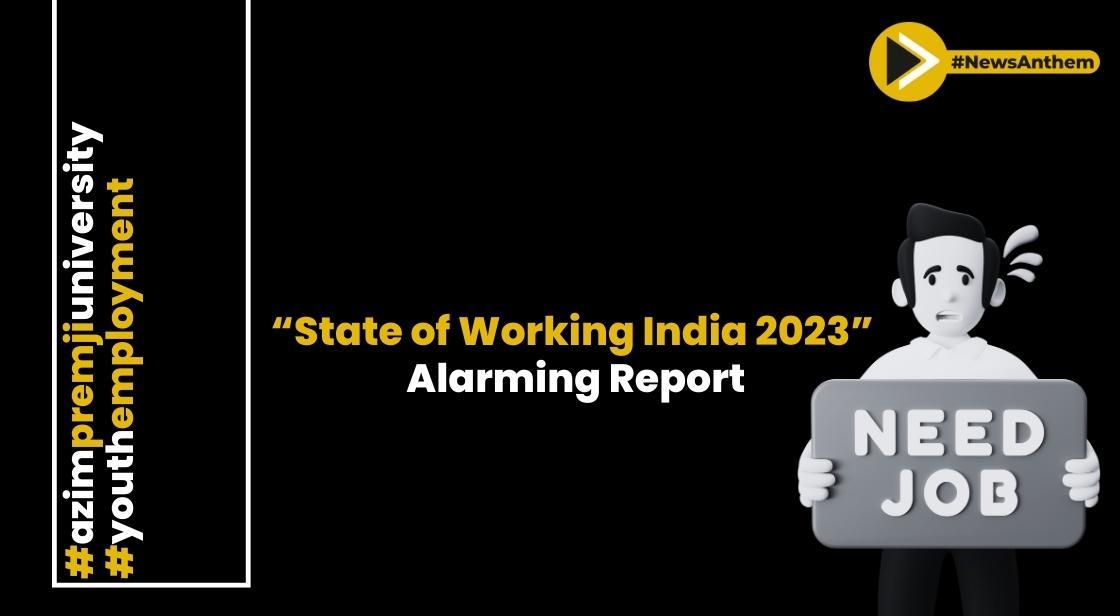Alarming Report: Over 40% of India's Graduates Under 25 Face Unemployment

News Synopsis
Alarming Unemployment Rates Among Young Graduates
A report titled "State of Working India 2023" has unveiled a troubling trend in India's job market. Despite an overall reduction in unemployment rates, graduates under the age of 25 are grappling with an unemployment rate exceeding 40%.
The report was released by Azim Premji University, and it draws upon data from the most recent Periodic Labour Force Survey (PLFS) for the year 2021-22.
Variability in Unemployment Rates Across Education Levels:
The report further highlights significant disparities within the educated youth demographic. Unemployment rates drop drastically from over 40% for individuals under 25 to less than 5% for graduates aged 35 and above, emphasizing the challenges faced by young job seekers.
Women's Workforce Dynamics Amid COVID-19:
Post the COVID-19 pandemic, the report sheds light on shifts in women's participation in the workforce. Notably, 60% of women have transitioned into self-employment, compared to 50% before the pandemic.
However, this transformation has come at a cost, with self-employment earnings in 2022 reaching only 85% of their pre-pandemic levels. This financial setback reflects the economic distress triggered by the pandemic.
Challenges in Women's Employment:
The report underscores two critical challenges in women's employment. First, there has been a decline in the participation rate of rural female workers. Second, the urban female workforce participation rate remains stagnant and low, posing obstacles to gender parity in the workforce.
Strides in Intergenerational Mobility:
While the report identifies positive trends in intergenerational mobility, it emphasizes disparities among workers belonging to Scheduled Castes (SC) and Scheduled Tribes (ST) compared to those from general castes.
Reduction in Gender-based Earnings Disparities:
Over the years, India has witnessed a narrowing of the gender-based earnings gap. In 2004, salaried women workers earned only 70% of their male counterparts' earnings. By 2017, this gap had reduced, with women earning 76% of what men did. However, progress has stagnated since 2021-22.
Encouraging Upward Mobility:
Historically, a significant proportion of sons of casual wage workers were themselves engaged in casual employment. This trend held true for both SC/ST workers and other castes.
However, this pattern has evolved positively, with a decline in casual employment and an increase in higher-quality work, particularly regular salaried jobs. While this improvement is observed across castes, SC/ST workers have experienced a slightly lesser decline in casual employment.
The "State of Working India 2023" report underscores the importance of addressing youth unemployment challenges, promoting gender equality in the workforce, and sustaining efforts to enhance employment quality and opportunities.
Additional information:
-
India's overall unemployment rate fell from 8.7% in 2017-18 to 6.6% in 2021-22. However, the unemployment rate for graduates under 25 years of age remained high at 42%.
-
The report also found that the unemployment rate for women was higher than for men. In 2021-22, the unemployment rate for women was 8.0%, while the unemployment rate for men was 5.8%.
-
The report also found that the unemployment rate for SC/ST workers was higher than for general caste workers. In 2021-22, the unemployment rate for SC/ST workers was 8.7%, while the unemployment rate for general caste workers was 6.2%.
Conclusion:
The report's findings are a reminder of the need to address India's unemployment problem. The government should focus on creating jobs and improving the quality of education and training.









